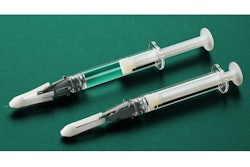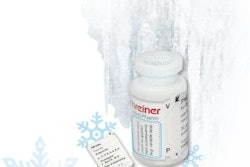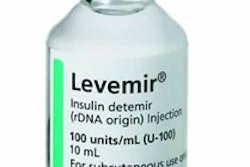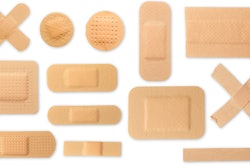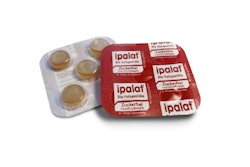
By 2013, world pharmaceutical packaging demand is projected to increase to $62.3 billion dollars, increasing from last year's $45.9 billion. Packaging is a vital and critical step in the drug development process, and after spending up to 10 years or more and millions of dollars developing a product, it's the last thing manufacturers should overlook. Packaging should be tested just as rigorously as the drug to establish product compatibility. Otherwise, there could be perilous consequences for the consumers' well being and the manufacturer's reputation.
Progressive manufacturers are moving away from reactive quality testing and towards proactive pre-testing for product-packaging compatibility--testing how drug solutions will react with packaging before the product is brought to market.
These often overlooked quality control issues are particularly important for injectables and liquid solutions supplied in glass vials. Made of common borosilicate and soda lime glasses, vials are chosen for their strong barrier properties, cost effectiveness, and perceived stability. Glass vials are assumed safe because of their longevity in the industry, yet long history does not equate with safety. Glass vials can pose contamination risks, often invisible to the naked eye, and should be pre-tested to ensure product compatibility.
Glass delamination explained
Glass vials used for pharmaceutical products must withstand attack from many chemicals and processes during the manufacturing process, including heat treatment, sterilization, product filling, and storage of potent drug mixtures. In rare instances, chemicals from the product solution or manufacturing process can cause a vial to delaminate and/or discolor, posing serious contamination risk to the drug product and potential liability for the drug manufacturer.
Glass delamination occurs when top layers of a glass surface separate and flake off or delaminate, typically at a scale invisible to the naked eye. Delamination is often correlated with pitting, a form of extremely localized corrosion that leads to the creation of small holes in the surface of the glass. Delamination can occur at any point during the vial's life: during manufacturing (e.g., fusion at the neck or base where delamination and/or pitting are frequently found), heat treatment, sterilization, or due to adverse reactions to the vial contents (e.g., etching due to an acidic or basic solution, or one with a high sodium or salt content).
There are many ways to investigate the problem of glass delamination in pharmaceutical vials, ranging from examining the chemical nature of the vial's contents to evaluating manufacturing conditions. As most pharmaceutical quality control departments are not equipped for extensive microanalytical testing, they may need to turn to independent laboratories to discover whether glass delamination is occurring.
Injectable packaging compatibility case study
Recently, a leading manufacturer of branded injectable pharmaceutical products pre-tested product-package compatibility on a developing drug candidate because it predicted the drug candidate would cause its glass vial packaging to delaminate.
The company did not have the equipment or expertise to examine the issue in depth. Therefore, the injectable company turned to McCrone Associates, the microanalysis division of The McCrone Group, to compare vials from three different manufacturers for glass delamination and corrosion potential to determine how the drug would affect them.
Prior to sending the vials to McCrone, the drug company stored them at different temperatures for different timeframes to determine under which conditions the vials were least likely to corrode. Vials from supplier companies A, B, and C (vial manufacturers were not revealed for purposes of confidentiality) were stored at 55ï‚°C for two weeks, and additional sets of vials from each of the three companies were stored at 40ï‚°C, 30ï‚°C, 25ï‚°C and 4ï‚°C for four weeks. A third set of vials from Company B was studied at these temperatures for eight weeks. Company B vials warranted additional study because they exhibited numerous striations along the inner vial wall, which was likely a byproduct of their manufacture, but a potential harmful variable.
At first sight
McCrone scientists first examined the empty vials using a stereomicroscope. Some pitting and striations were noticed on a few of the vials across each set, but no definitive assessments of delamination could be made. The vials were then submitted to McCrone's ISO Class 5 cleanroom for further sample preparation and more rigorous examination.
Although these vials were sent empty, McCrone recommends that pharmaceutical manufacturers submit their vials filled with the original drug solution for drug compatibility testing and vial evaluation. With proper illumination and microscope setup, an examination of the vial can reveal any particulate matter floating in the solution. Often particulates cannot be seen with visual inspection alone, and only examination with a stereomicroscope will reveal them suspended in solution. Using a combination of transmitted light, coaxial illumination, and fiber-optic oblique illumination, the nature of the particulate can be characterized. Microscopists look for a “twinkling effect” that results when light reflects off particulate contaminants in solution. Thus, an initial examination with a stereomicroscope can lead to early identification of delamination problems, saving both time and money on additional testing.
Sample preparation
The vials were then carefully broken into smaller pieces to examine their interior surfaces in McCrone's ISO Class 5 cleanroom. In this environment, there are no more than 100 particles per cubic foot of air •‰¥ 0.5 μm. By comparison, a regular laboratory environment can have millions of particles in the air at any time. A majority of all the samples analyzed at McCrone Associates are prepared in the cleanroom to reduce the risk of contamination. Throughout the entire process, McCrone scientists document observation and analyses in accord with the company's quality control procedures.
Microanalysis of vials
Residues from the inner vial walls were mounted on potassium bromide crystals for micro-FTIR analysis. Infrared spectroscopy is used to identify the organic materials present as well as some inorganic materials, including glass.
Company A's vials showed an unusual pink and brown discoloration in all temperature ranges; therefore, McCrone scientists isolated a portion of the discoloration from the vial wall from the 55ï‚°C set for micro-FTIR analysis along with delamination flakes to determine if there was a similarity between them. Both IR spectra showed a broad band at ~1100 cm-1, which is characteristic of silica and suggested the discoloration was a property of the glass, and not a foreign contaminant.
Particulate from all the vials was also mounted on a carbon substrate for scanning electron microscopy (SEM) and energy dispersive X-ray spectrometer (EDS) analyses. These analyses can confirm whether the contaminant is glass and can provide clues to the conditions under which delamination is most likely to occur.
Using the SEM/EDS method, two types of information were obtained: high-resolution electron images showing the features of the contaminant and x-ray spectra of the elemental constituents present in the sample. EDS is commonly used for the analysis of inorganic materials to identify particulate matter such as metals and glass fragments. SEM/EDS analysis can also be performed directly on large fragments of glass from vials.
For some of the Company C vials, images of glass pieces flaking off the interior walls were captured using SEM/EDS and confirmed to be glass delamination. Imaging of the glass fragments in the SEM/EDS also revealed pitting on the glass surface, and further examination at higher magnification demonstrated tapering and enlargement of the pits, indicating that as pitting increased, the pit borders overlapped and caused pieces of glass to flake off or delaminate.
Finally, the vial fragments were examined using X-ray photoelectron spectroscopy (XPS, also known as electron spectroscopy for chemical analysis or ESCA). XPS is the method of choice for analysis of very thin surface films because it provides analytical information from only the outermost (~5 nm) surface of the sample. This technique is well suited for the analysis of thin surface layers and residues on the surface of solid samples, and was essential in determining the chemical nature of glass delamination.
In Company A, B, and C's vials XPS analysis revealed the chemical composition of the glass surfaces of the vials and showed changes in the relative amounts of glass component elements sodium (Na), calcium (Ca), magnesium (Mg), and silicon (Si) in the fragments. These chemical changes are indicators of chemical attack of the glass by the drug product solution, which in turn produced preferential leaching of reactive components. Therefore, the XPS revealed the chemical attack was the cause of pitting and eventually, the delamination of the vials.
Drug company case study findings
Using a combination of Light Microscopy, micro-FTIR, SEM/EDS, and XPS analyses, McCrone found that the highly basic drug in this compatibility study produced glass delamination in all three tested vials, and that the delamination often occurred near the fill line. It was also determined that as the storage temperature and time increased for these vials, their vulnerability to delamination increased.
Pitting is often indicative of and a precursor to delamination. The analytical results in this study showed that as pits grow larger and/or appear in greater number, they can begin to consolidate to produce the flat flakes typical of glass delamination.
The drug company discontinued the development of the drug candidate after reviewing the analytical results. “Patient safety comes first--and this particular drug reacted with packaging in volatile ways,” said the company's lead product developer. “Even if we could solve the delamination problem with new kinds of vials or different packaging, there might still be a risk for extractables or leachables due to the drug's high pH level and the way the drug reacts with its packaging. We saved money on additional testing and decided the drug was not worth the potential risk of letting it go to market.”
While bringing a product to market, packaging is a critical step. However, it's often the last, and potential packing problems can be easily overlooked until very late in product development. As this case study illustrated, the wrong packaging can delay or even shutdown a developing project. Therefore, the package's stability, functional performance, and integrity should be tested early in the development process.
-By Kristie J. Diebold
----------------------------------------------------------------
Kristie J. Diebold is cleanroom manager and senior research microscopist at McCrone Associates, Inc., the analytical division of The McCrone Group, Westmont, IL. She specializes in microscopical analysis of fine particles in micrometer and sub-micrometer size ranges including: manipulation, characterization and preparation for instrumental ultramicroanalysis.
Progressive manufacturers are moving away from reactive quality testing and towards proactive pre-testing for product-packaging compatibility--testing how drug solutions will react with packaging before the product is brought to market.
These often overlooked quality control issues are particularly important for injectables and liquid solutions supplied in glass vials. Made of common borosilicate and soda lime glasses, vials are chosen for their strong barrier properties, cost effectiveness, and perceived stability. Glass vials are assumed safe because of their longevity in the industry, yet long history does not equate with safety. Glass vials can pose contamination risks, often invisible to the naked eye, and should be pre-tested to ensure product compatibility.
Glass delamination explained
Glass vials used for pharmaceutical products must withstand attack from many chemicals and processes during the manufacturing process, including heat treatment, sterilization, product filling, and storage of potent drug mixtures. In rare instances, chemicals from the product solution or manufacturing process can cause a vial to delaminate and/or discolor, posing serious contamination risk to the drug product and potential liability for the drug manufacturer.
Glass delamination occurs when top layers of a glass surface separate and flake off or delaminate, typically at a scale invisible to the naked eye. Delamination is often correlated with pitting, a form of extremely localized corrosion that leads to the creation of small holes in the surface of the glass. Delamination can occur at any point during the vial's life: during manufacturing (e.g., fusion at the neck or base where delamination and/or pitting are frequently found), heat treatment, sterilization, or due to adverse reactions to the vial contents (e.g., etching due to an acidic or basic solution, or one with a high sodium or salt content).
There are many ways to investigate the problem of glass delamination in pharmaceutical vials, ranging from examining the chemical nature of the vial's contents to evaluating manufacturing conditions. As most pharmaceutical quality control departments are not equipped for extensive microanalytical testing, they may need to turn to independent laboratories to discover whether glass delamination is occurring.
Injectable packaging compatibility case study
Recently, a leading manufacturer of branded injectable pharmaceutical products pre-tested product-package compatibility on a developing drug candidate because it predicted the drug candidate would cause its glass vial packaging to delaminate.
The company did not have the equipment or expertise to examine the issue in depth. Therefore, the injectable company turned to McCrone Associates, the microanalysis division of The McCrone Group, to compare vials from three different manufacturers for glass delamination and corrosion potential to determine how the drug would affect them.
Prior to sending the vials to McCrone, the drug company stored them at different temperatures for different timeframes to determine under which conditions the vials were least likely to corrode. Vials from supplier companies A, B, and C (vial manufacturers were not revealed for purposes of confidentiality) were stored at 55ï‚°C for two weeks, and additional sets of vials from each of the three companies were stored at 40ï‚°C, 30ï‚°C, 25ï‚°C and 4ï‚°C for four weeks. A third set of vials from Company B was studied at these temperatures for eight weeks. Company B vials warranted additional study because they exhibited numerous striations along the inner vial wall, which was likely a byproduct of their manufacture, but a potential harmful variable.
At first sight
McCrone scientists first examined the empty vials using a stereomicroscope. Some pitting and striations were noticed on a few of the vials across each set, but no definitive assessments of delamination could be made. The vials were then submitted to McCrone's ISO Class 5 cleanroom for further sample preparation and more rigorous examination.
Although these vials were sent empty, McCrone recommends that pharmaceutical manufacturers submit their vials filled with the original drug solution for drug compatibility testing and vial evaluation. With proper illumination and microscope setup, an examination of the vial can reveal any particulate matter floating in the solution. Often particulates cannot be seen with visual inspection alone, and only examination with a stereomicroscope will reveal them suspended in solution. Using a combination of transmitted light, coaxial illumination, and fiber-optic oblique illumination, the nature of the particulate can be characterized. Microscopists look for a “twinkling effect” that results when light reflects off particulate contaminants in solution. Thus, an initial examination with a stereomicroscope can lead to early identification of delamination problems, saving both time and money on additional testing.
Sample preparation
The vials were then carefully broken into smaller pieces to examine their interior surfaces in McCrone's ISO Class 5 cleanroom. In this environment, there are no more than 100 particles per cubic foot of air •‰¥ 0.5 μm. By comparison, a regular laboratory environment can have millions of particles in the air at any time. A majority of all the samples analyzed at McCrone Associates are prepared in the cleanroom to reduce the risk of contamination. Throughout the entire process, McCrone scientists document observation and analyses in accord with the company's quality control procedures.
Microanalysis of vials
Residues from the inner vial walls were mounted on potassium bromide crystals for micro-FTIR analysis. Infrared spectroscopy is used to identify the organic materials present as well as some inorganic materials, including glass.
Company A's vials showed an unusual pink and brown discoloration in all temperature ranges; therefore, McCrone scientists isolated a portion of the discoloration from the vial wall from the 55ï‚°C set for micro-FTIR analysis along with delamination flakes to determine if there was a similarity between them. Both IR spectra showed a broad band at ~1100 cm-1, which is characteristic of silica and suggested the discoloration was a property of the glass, and not a foreign contaminant.
Particulate from all the vials was also mounted on a carbon substrate for scanning electron microscopy (SEM) and energy dispersive X-ray spectrometer (EDS) analyses. These analyses can confirm whether the contaminant is glass and can provide clues to the conditions under which delamination is most likely to occur.
Using the SEM/EDS method, two types of information were obtained: high-resolution electron images showing the features of the contaminant and x-ray spectra of the elemental constituents present in the sample. EDS is commonly used for the analysis of inorganic materials to identify particulate matter such as metals and glass fragments. SEM/EDS analysis can also be performed directly on large fragments of glass from vials.
For some of the Company C vials, images of glass pieces flaking off the interior walls were captured using SEM/EDS and confirmed to be glass delamination. Imaging of the glass fragments in the SEM/EDS also revealed pitting on the glass surface, and further examination at higher magnification demonstrated tapering and enlargement of the pits, indicating that as pitting increased, the pit borders overlapped and caused pieces of glass to flake off or delaminate.
Finally, the vial fragments were examined using X-ray photoelectron spectroscopy (XPS, also known as electron spectroscopy for chemical analysis or ESCA). XPS is the method of choice for analysis of very thin surface films because it provides analytical information from only the outermost (~5 nm) surface of the sample. This technique is well suited for the analysis of thin surface layers and residues on the surface of solid samples, and was essential in determining the chemical nature of glass delamination.
In Company A, B, and C's vials XPS analysis revealed the chemical composition of the glass surfaces of the vials and showed changes in the relative amounts of glass component elements sodium (Na), calcium (Ca), magnesium (Mg), and silicon (Si) in the fragments. These chemical changes are indicators of chemical attack of the glass by the drug product solution, which in turn produced preferential leaching of reactive components. Therefore, the XPS revealed the chemical attack was the cause of pitting and eventually, the delamination of the vials.
Drug company case study findings
Using a combination of Light Microscopy, micro-FTIR, SEM/EDS, and XPS analyses, McCrone found that the highly basic drug in this compatibility study produced glass delamination in all three tested vials, and that the delamination often occurred near the fill line. It was also determined that as the storage temperature and time increased for these vials, their vulnerability to delamination increased.
Pitting is often indicative of and a precursor to delamination. The analytical results in this study showed that as pits grow larger and/or appear in greater number, they can begin to consolidate to produce the flat flakes typical of glass delamination.
The drug company discontinued the development of the drug candidate after reviewing the analytical results. “Patient safety comes first--and this particular drug reacted with packaging in volatile ways,” said the company's lead product developer. “Even if we could solve the delamination problem with new kinds of vials or different packaging, there might still be a risk for extractables or leachables due to the drug's high pH level and the way the drug reacts with its packaging. We saved money on additional testing and decided the drug was not worth the potential risk of letting it go to market.”
While bringing a product to market, packaging is a critical step. However, it's often the last, and potential packing problems can be easily overlooked until very late in product development. As this case study illustrated, the wrong packaging can delay or even shutdown a developing project. Therefore, the package's stability, functional performance, and integrity should be tested early in the development process.
-By Kristie J. Diebold
----------------------------------------------------------------
Kristie J. Diebold is cleanroom manager and senior research microscopist at McCrone Associates, Inc., the analytical division of The McCrone Group, Westmont, IL. She specializes in microscopical analysis of fine particles in micrometer and sub-micrometer size ranges including: manipulation, characterization and preparation for instrumental ultramicroanalysis.
